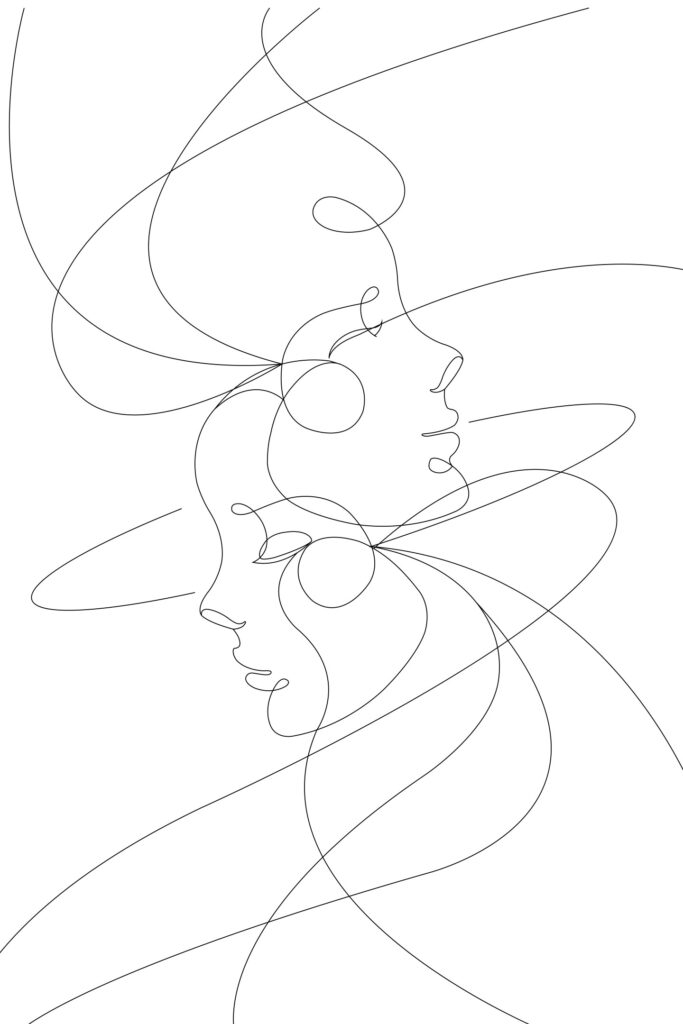Two Sides of the Coin
Bipolar disorder is a commonly known condition, but not many people know about the differences between bipolar 1 and bipolar 2, which are separate diagnoses. Unfortunately, this can prevent some people from recognizing the signs of bipolar disorder that they may be presenting, often leaving them to go untreated. Here, we spoke with local experts Dr. Jason Pooler, a psychiatrist with Integrative Psychiatry of Chattanooga, and Shawn Winton, a licensed professional counselor with Erlanger Community Health Center, to learn more.

When many people think of bipolar disorder, what comes to mind is actually a specific type of bipolar disorder known as bipolar 1 (BP1). On the other hand, bipolar 2 (BP2) tends to fly a bit more under the radar. Both diagnoses of BP1 and BP2 are made by looking at patterns of extreme mood changes known as manic, hypomanic, and depressive episodes, but the mood changes differ significantly between the two.
The key to understanding the differences between BP1 and BP2 lies in the criteria for mania, hypomania, and depression.
Manic Episodes
Mania is known as the “high” of the manic-depressive cycle. During a manic episode, a person will typically experience an extreme increase in energy, elevated levels of happiness or irritation, and a subsequent change in behavior. “Symptoms of mania include grandiosity (feeling like they are invincible), engaging in high-risk behaviors, rapid speech, and racing thoughts (inability to communicate one thought before another one comes),” Winton explains.
“These feelings can be exhilarating, which can lead the person to not seek treatment or to avoid their medications.” A person experiencing a manic episode may start a variety of new projects in a short amount of time, take on more social engagements than they typically would, or feel plenty of energy even without getting enough sleep. Manic episodes can last anywhere from one week to six months.
Hypomanic Episodes
Hypomania is similar to mania in that it causes abnormally elevated mood, energy, and activity levels. But unlike mania, which can lead to hospitalization, hypomania is typically not severe enough to impact a person’s daily functioning. For example, someone experiencing a hypomanic episode may suddenly decide to clean every inch of their house, focus on a new project for hours without needing a break, or become abnormally chatty with friends or on social media. Hypomania can cause feelings of euphoria, but is unlikely to cause symptoms of psychosis such as delusions or hallucinations. Hypomania is typically short-lived, but must last at least four days to be considered a hypomanic episode.
Depressive Episodes
Depressive episodes are considered the “low” of the manic-depressive cycle, as a depressive episode brings on the same symptoms that someone with clinical depression may experience. These include feelings of hopelessness or extreme sadness, loss of interest in things that once made you happy, diminished energy despite getting plenty of sleep, and difficulty performing daily tasks. Additional symptoms may include irritability, difficulty concentrating, changes to sleeping or eating habits, and suicidal thoughts. Symptoms of depression must be present for at least two weeks in order to be considered a depressive episode, but the average duration is six to eight months.
What is the difference between BP1 and BP2?
Some people think that BP2 is simply a less severe form of BP1, but this is a common misconception. Both disorders are characterized by severe changes in mood that have a significant impact on a person’s life, with BP1 leaning toward more severe mania and BP2 leaning toward more severe depression. Both disorders can occur at any age, but are typically diagnosed in the late teens and early 20s.
“Both Bipolar 1 and 2 include high-risk behaviors or actions that can cause harm to the person, their family, and their community,” Winton explains. “Both are diagnosed using standardized assessment tools to help determine the severity and duration of the symptoms.”
Diagnosis
Everyone will experience ups and downs in life, but that is not equivalent to experiencing the severe mood episodes that characterize bipolar disorder.


Both Bipolar 1 and 2 include high-risk behaviors or actions that can cause harm to the person, their family, and their community. Both are diagnosed using standardized assessment tools to help determine the severity and duration of the symptoms.”
Shawn Winton
According to Dr. Pooler, many people are incorrectly diagnosed with BP1 or BP2 after significant life events, such as divorce or immense stress at work, cause a change in their behavior. Such experiences can certainly illuminate a need for psychotherapy, but they do not necessarily warrant a diagnosis of BP1 or BP2.
Historically, BP1 and BP2 have been diagnosed with the following criteria:
BP1: A person must experience at least one manic episode lasting one week to six months. Periods of hypomania or depression may occur between manic episodes, but this is not necessary for a diagnosis of BP1.
BP2: A person must experience at least one major depressive episode and at least one hypomanic episode lasting at least four days. They cannot have ever experienced a manic episode, as that would indicate BP1.
For Dr. Pooler, diagnosing bipolar disorder involves bloodwork to identify factors that could be affecting a patient’s serotonin levels. Serotonin allows the brain to regulate moods, social behaviors, and much more, and abnormal levels of serotonin are a key factor in bipolar disorder. Because abnormal levels of vitamin D and C-reactive protein can impair the brain’s ability to produce serotonin, Dr. Pooler stresses the importance of checking those levels in the diagnostic period. If the bloodwork shows abnormalities, Dr. Pooler will first prescribe supplements, such as vitamin D and omega-3 fatty acids, and typically finds that symptoms improve with less need for medications – though they are certainly an option, if needed.
Treatment


For both BP1 and BP2, treatment typically involves a combination of psychotherapy and medication. The types of medications will depend on the individual’s symptoms and severity of symptoms, but they include mood stabilizers to control mania or hypomania, antipsychotics for severe mania, and antidepressants.
Therapy is also beneficial, particularly in addressing high-risk behaviors and providing coping mechanisms. “Assisting the patient to understand the physical symptoms of their mood swings and introducing effective coping skills, in addition to medication assessment, are important in treating the conditions,” Winton says. “These conditions can be effectively treated and managed, and the individual can live a higher quality of life.”
Some treatments that are effective for one type of bipolar disorder may actually worsen symptoms for the other. For example, ketamine therapy has been touted as a successful treatment for depression that can also be used for individuals diagnosed with BP2. Dr. Pooler describes ketamine as a helpful supplement to psychotherapy, particularly in patients who are having suicidal ideations. “I sometimes use ketamine in my practice as a tool for harm reduction. If a patient is suicidal, a shot of ketamine can bring them back to a safer place and we can move forward from there,” he explains. On the other hand, Dr. Pooler says that ketamine therapy could induce mania or worsen existing mania, so it would not be used in treating BP1.
The highs and lows of bipolar disorder can be very difficult for a person to deal with, but they can be managed with an accurate diagnosis and proper treatment. If you suspect that you or a loved one might be experiencing episodes of mania, hypomania, or depression, speak with a physician or psychiatrist who can help determine the correct course of action.


Jason Pooler, MD
Psychiatrist, Integrative Psychiatry of Chattanooga


Shawn Winton
Licensed Professional Counselor, Erlanger Community Health Center

